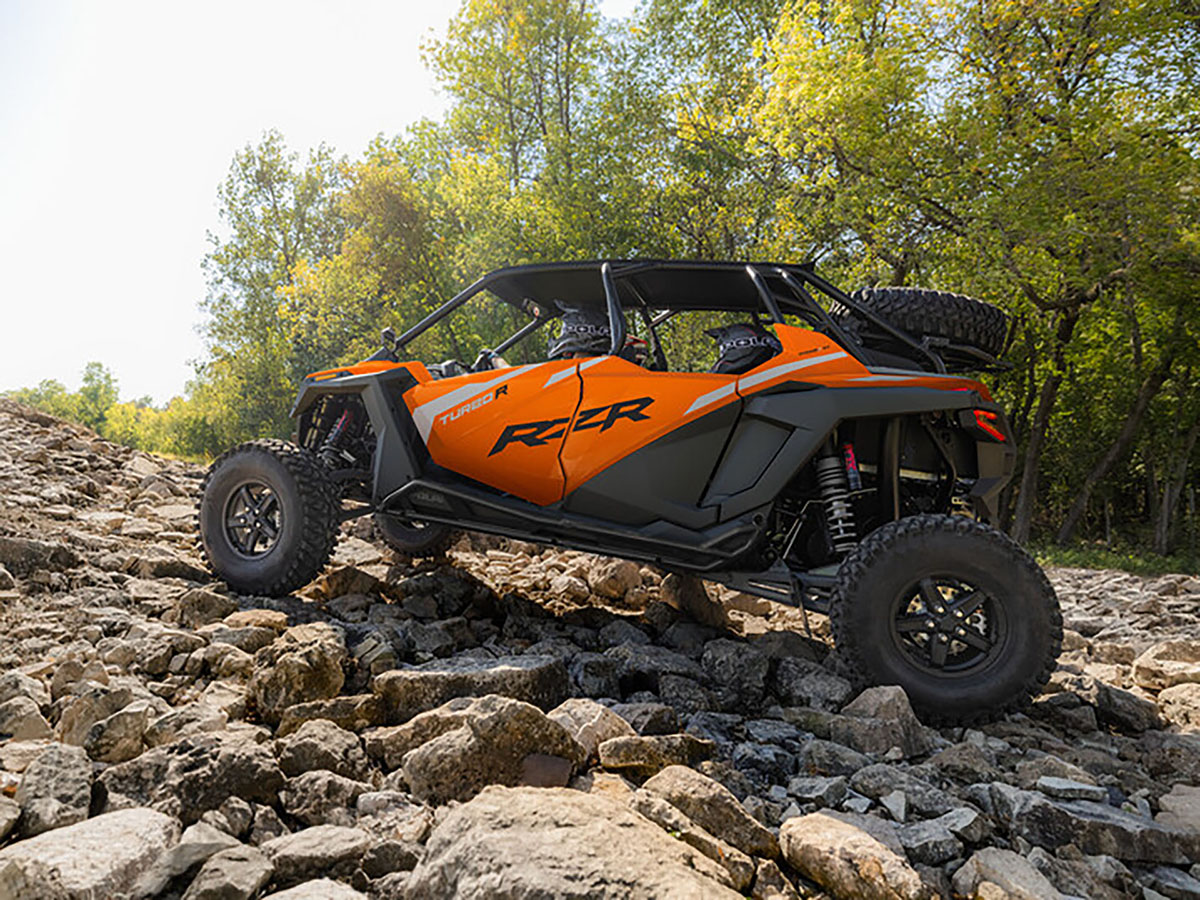Breaking in a new drive belt for your Polaris RZR side by side utv is crucial if you want to get the best performance and longest life out of it. You can also break in any spare belts you have lying around. Trust me, you don’t want to skip this step or you’ll be sorry later.
Buy the right belt with our Polaris UTV drive belt buying guide
Now, breaking in a belt isn’t just about putting in a set number of miles and avoiding high engine RPMs. It’s about flexing the belt in the correct direction so that it wears and mates to the proper angle of the sheaves and friction. This wear needs to happen under low load and temperature because belts run hotter when first installed and are more sensitive to high loads until they break in.
So, to break in a belt properly, you need to use low gear (if available) while varying speeds and avoiding wide open throttle for 5 to 10 miles. If no low gear is available, vary at moderate speeds while avoiding wide open throttle for 50 miles. The goal of break-in is to achieve a high number of flex cycles under low load while maintaining low temperatures.
Now, even with a proper break-in, it’s still possible to damage a belt with excessive heat or spin-burn. Spin-burn or hourglassing is a result of not using low gear when tires are stuck in mud or sand or when loading or unloading your vehicle. An engine misfire often indicates belt slippage because of spin-burn. So, inspect your belt for hourglassing, jerky or hesitant drive-away or acceleration, loose cords, missing cogs, cracks, abrasions, thin spots or excessive wear. Compare belt measurements with a new drive belt, and replace if necessary.

If you do need to replace your belt, We recommend the Polaris OEM UTV drive belts, which are designed and tested specifically for their off-road vehicles. Always clean any debris from the PVT intake and outlet ducts and from the clutch, clutch covers, and engine compartments if a belt fails. Verify the clutch rollers are tight and rolling smoothly and the weights are not notched or loose. Ensure the seal on the clutch cover is in good shape, not twisted or torn, and installed correctly.
And finally, if you accidentally ingest water into the PVT system, use the following instructions to dry it out before operating:
- Position the vehicle on a level surface. Place the transmission in PARK.
- Remove the drain plug from the outer clutch cover. Allow the water to drain completely. Reinstall the drain plug.
- Start the engine.
- Apply varying throttle for 10 to 15 seconds (we suggest 5-6,000 RPM) to expel the moisture and air-dry the belt and clutches. Do not hold the throttle wide open for more than 5 seconds.
- Allow the engine RPM to settle to idle speed and then shift the transmission to low range.
- Test for belt slippage. If the belt slips, repeat the process. Your vehicle requires service as soon as possible. See your authorized Polaris Dealer.
So, there you have it. Take care of your belt and it’ll take care of you. Don’t be a fool and skip the break-in or you’ll be singing the blues later on.
Related Questions About Polaris RZR Drive Belts
What does a failing drive belt sound like?
RZR belt breakage is a problem that can have several culprits. It could be due to overloading the vehicle with too much weight or putting it through the wringer in harsh riding conditions. Riding in extreme heat or thick clouds of dust can speed up the wear and tear on the belt, causing it to fail sooner. Neglecting to keep the belt clean or ignoring warning signs of wear and tear can also lead to breakage. And, in some rare instances, defects in the manufacturing process may cause the belt to fail before its time.
Why do my belts keep ripping?
Why do my Polaris drive belts keep ripping? Well, it could be due to overloading the vehicle or carrying too much weight, harsh riding conditions such as extreme heat or dust, poor maintenance, or even manufacturing defects. Take good care of your belt and avoid straining it, and you’ll have fewer problems.
Recent Posts
How Long Can I Drive My UTV on Unbalanced Tires? Driving on unbalanced tires can be dangerous and should be avoided whenever possible. UTVs are no exception and require special consideration when it...
Discover the Best UTV Tires for Rock Crawling - Our Pick For The Best Rock Crawling Tires
Rock crawling in a UTV is an extreme form of off-road driving that requires the right equipment, especially when it comes to tires. The tire you choose can significantly impact your UTV's...

